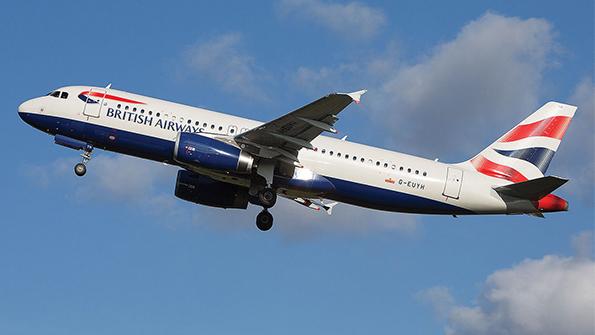
As demand soars and profits approach pre-pandemic levels, European airline executives should be cracking open the champagne—but short-term operational issues are putting a damper on any optimism.
When Air France-KLM, International Airlines Group (IAG) and Lufthansa Group reported their earnings for the first half of the year, the positive figures were set against a backdrop of operational disruption. Airport staff shortages—particularly in ground handling and security—as well as strikes, threats of strikes and air traffic management delays have combined to lead to thousands of flight cancellations and countless hours of travel delays for passengers in Europe during the peak summer season.
- Heathrow and Schiphol Airports have introduced capacity caps
- Lufthansa faces more disruption from threat of pilot strike
- Air France-KLM CEO warns operational issues will last some time
Two of the region’s biggest airports, Amsterdam Schiphol and London Heathrow, have had to introduce capacity caps to manage the situation.
Amsterdam Schiphol said on Aug. 2 that it will tighten capacity limits through October, while ongoing issues at Heathrow have forced British Airways to impose limits on short-haul ticket sales.
In addition to launching a recruitment campaign for security guards to help ease the staffing crunch, Schiphol set a cap of 73,000 local departures per day in August and 67,500 per day in September. The cap increases slightly to 69,500 in October, which includes the fall holidays in the Netherlands.
The airport noted that as the weather cools, the security process slows down as passengers must remove coats and jackets and place them in trays for scanning.
“Based on the capacity made available by Schiphol, the independent slot coordinator will consult with all airlines to ensure that the number of passengers is appropriate in relation to the security capacity,” the airport said.
Setting out its first-half results on July 29, Air France-KLM highlighted the broader issue of operational problems, saying that attempts to mitigate the effects had led to an extra €70 million ($71 million) in compensation costs in its latest quarter. It also predicted that the return of capacity levels close to those of 2019 would be slower than previously expected.
The airline group said passenger network capacity reached 82% in the second quarter, in line with its May prediction of 80-85%, but it trimmed its capacity outlook for passenger network activities for the third quarter through September, which includes the peak European holiday period, saying it expected to operate at 80-85% of 2019 levels, down from a prediction made in early May of 85-90%.
It now expects to reach 85-90% in the fourth quarter and to be about 80% for the year as a whole.
“This booming demand took many by surprise,” Air France-KLM CEO Benjamin Smith said as the results were released. “We have seen a critical staff shortage in airports and major disruption affecting our ground services worldwide. Some of these operational challenges have been triggered by lack of preparation and anticipation by some players. But the reality is that some of these disruptions will continue to surface for many years. With labor shortages, hub congestion and ongoing supply chain issues, we are adapting to a more complex environment both socially and geopolitically.”
Lufthansa Group CEO Carsten Spohr also pointed to a boom in demand that was stronger than the group anticipated as he outlined the first-half results on Aug. 4. “I had hoped to report better news regarding our operations, but this is not the case,” he added.
“The Lufthansa Group is back in the black,” Spohr said. “This is a strong result after a half year that was challenging for our guests but also for our employees. People’s wish to travel continues unabated.” He added, however, that “worldwide, the airline industry reached its operational limits.”
Lufthansa canceled more than 7,000 flights this summer season to stabilize flight operations, and it faces the threat of more strike action from its pilots, although Spohr said he is hopeful of reaching a settlement.
Lufthansa plans to continue expanding capacity, offering about 80% of pre-crisis capacity in the third quarter, resulting in a further profitability improvement quarter-over-quarter. Capacity for the year as a whole should reach about 75%, and bookings for August-December are averaging 83% of pre-COVID-19 levels.
British Airways said on Aug. 2 that it is managing a dynamic situation at Heathrow that is primarily affecting short-haul flights, although individual long-haul routes on particular dates might also be hit. The carrier said there would be limits on seats for sale on certain dates. Its ticket sales might also be completely halted on some dates to ensure that it does not exceed Heathrow’s cap of 100,000 departing passengers a day until Sept. 11, a cap the airport imposed to cope with ground staff shortages.
IAG reported a €73 million net profit in the three months through June, up from a €1.12 billion loss in the same quarter of 2021. CEO Luis Gallego, like other executives, sounded a positive note about demand: “Forward bookings show sustained strength, and North Atlantic demand continues to grow following the lifting of the U.S. COVID testing requirements in June. Although bookings into the fourth quarter are seasonally low at this time of year, we are seeing no signs of any weakness in demand.”
But echoing his airline CEO peers, he noted that the group faces “historic challenges” in coping with that growing demand.
—With Alan Dron in London and Kurt Hofmann in Vienna





